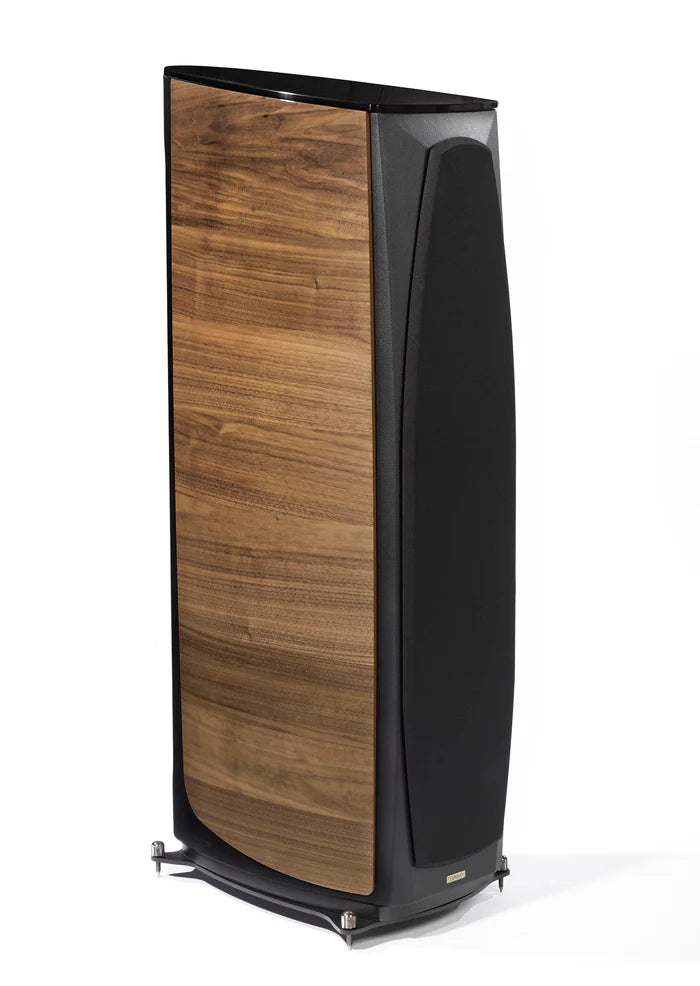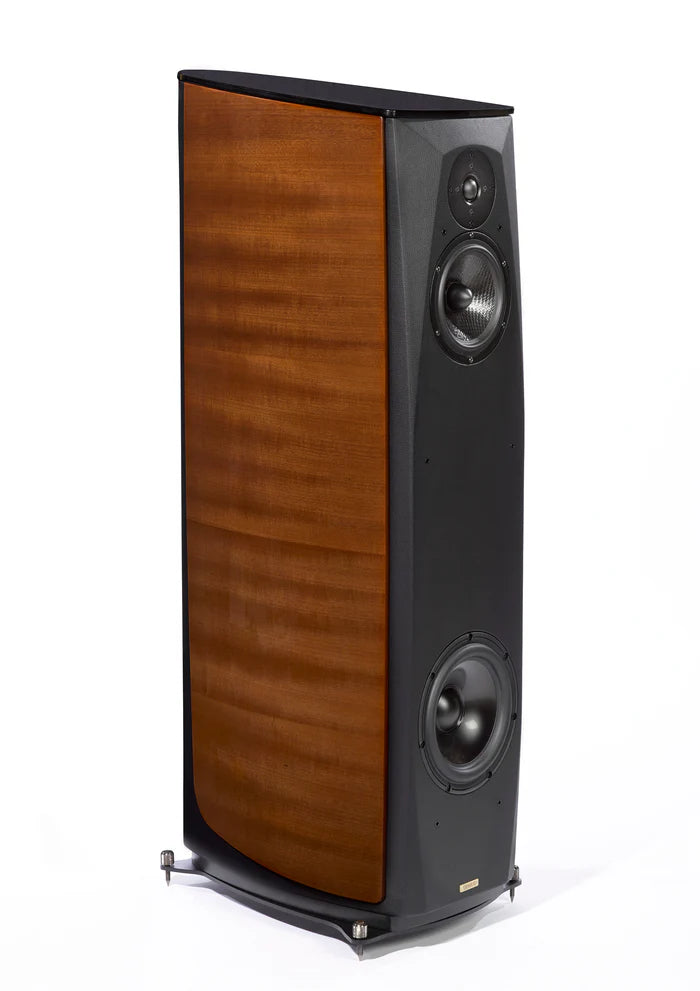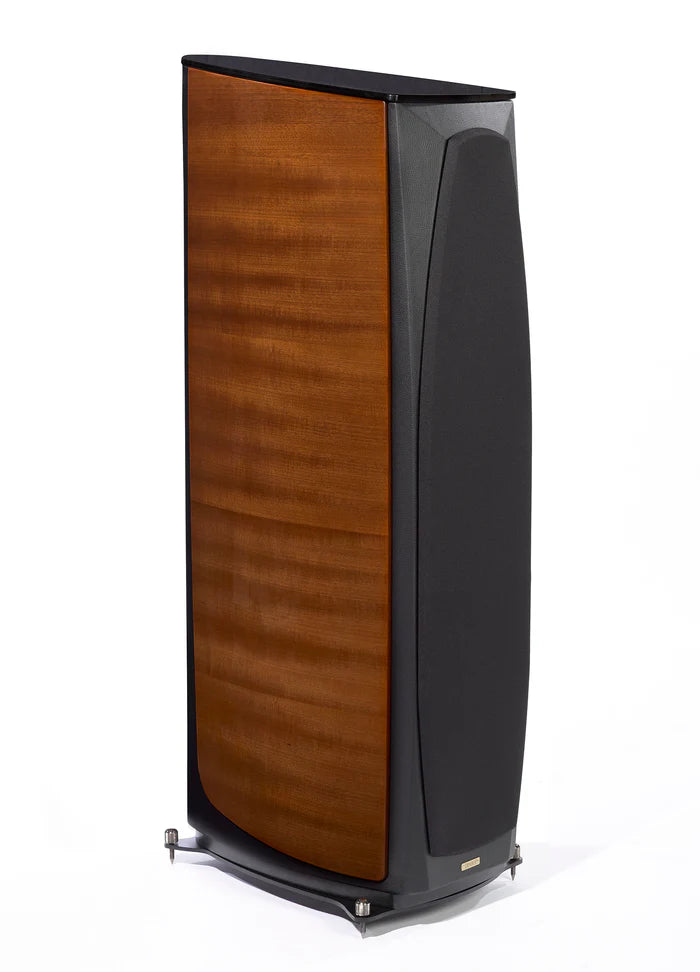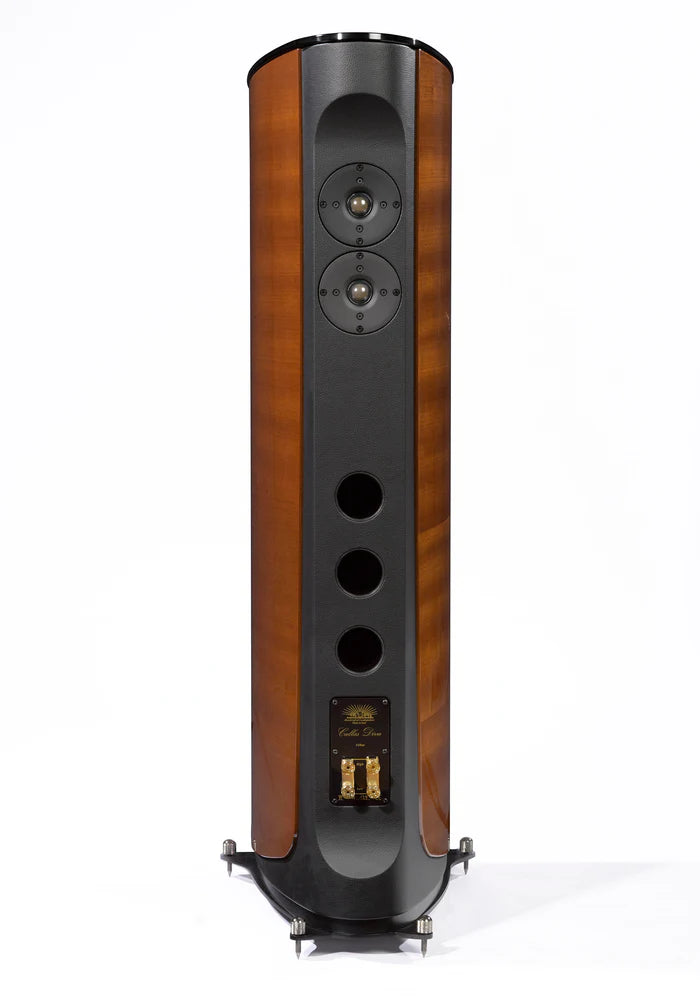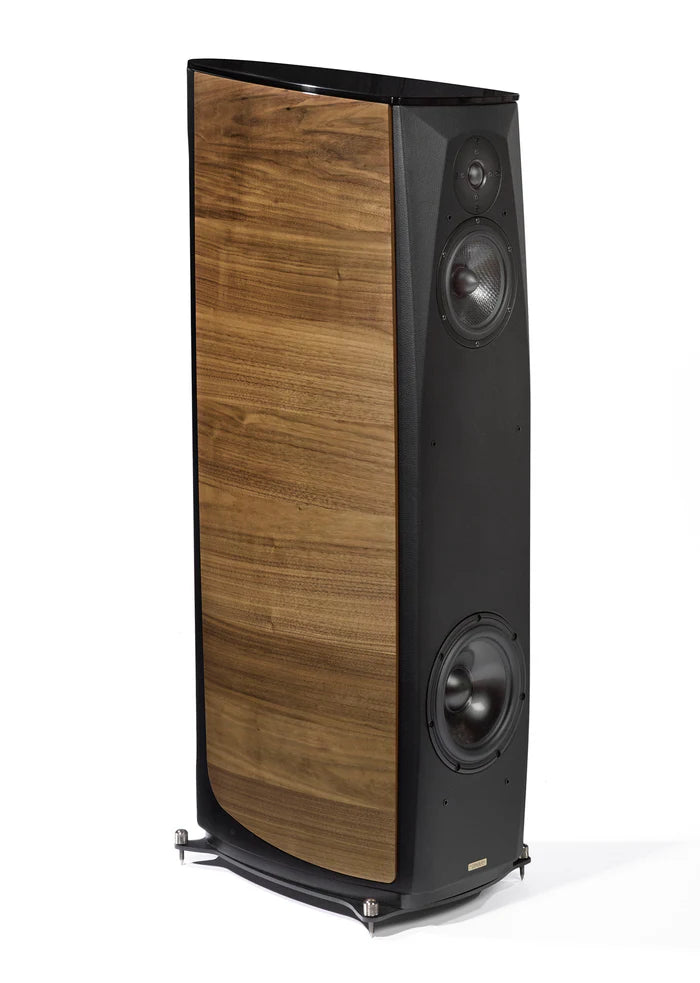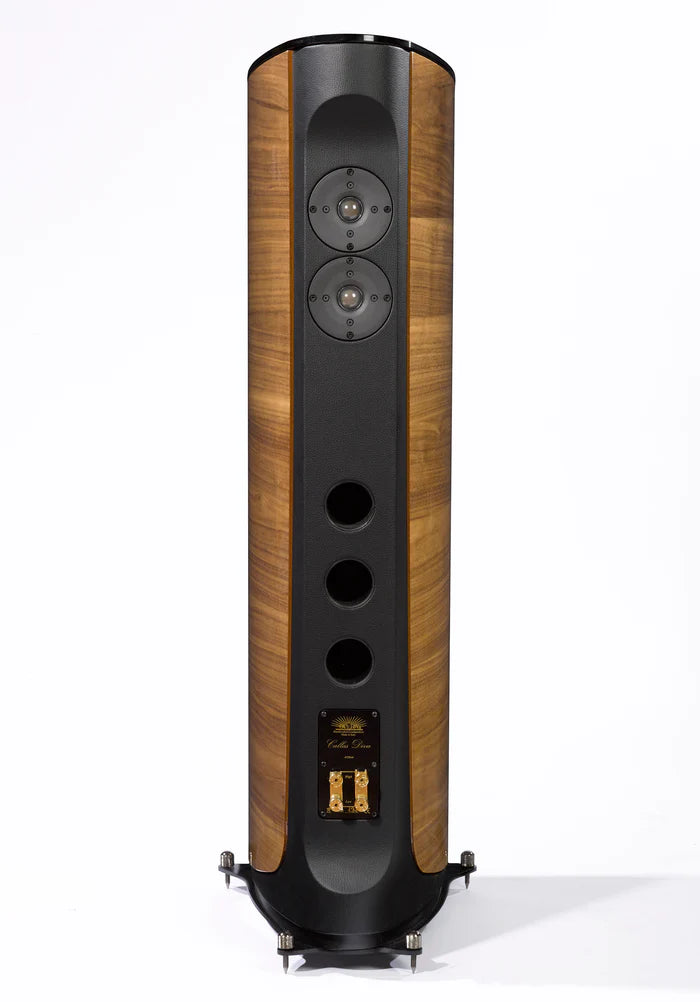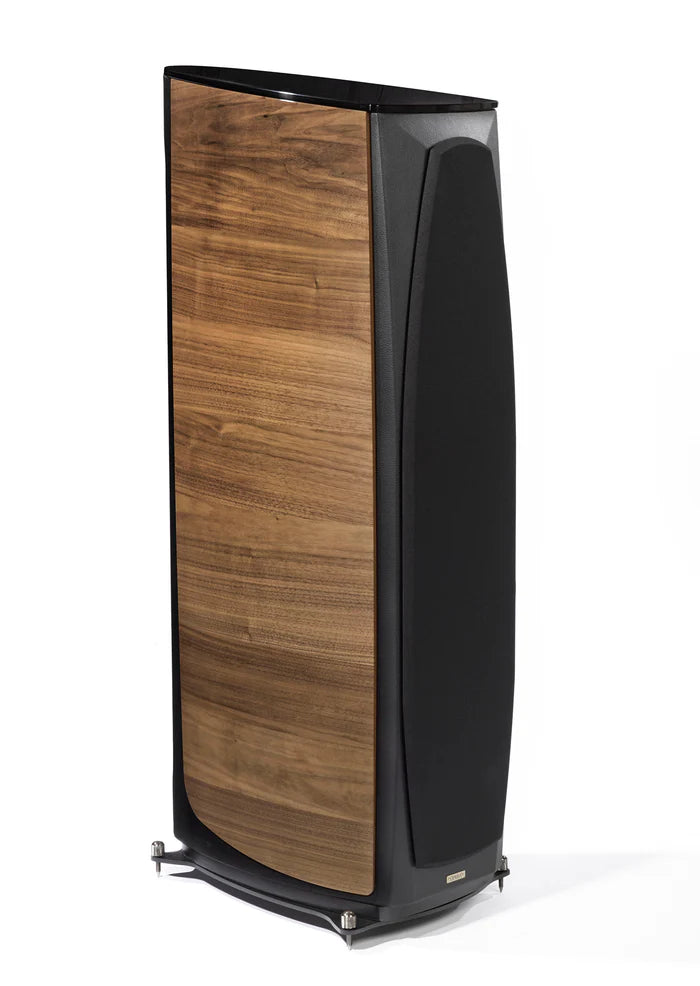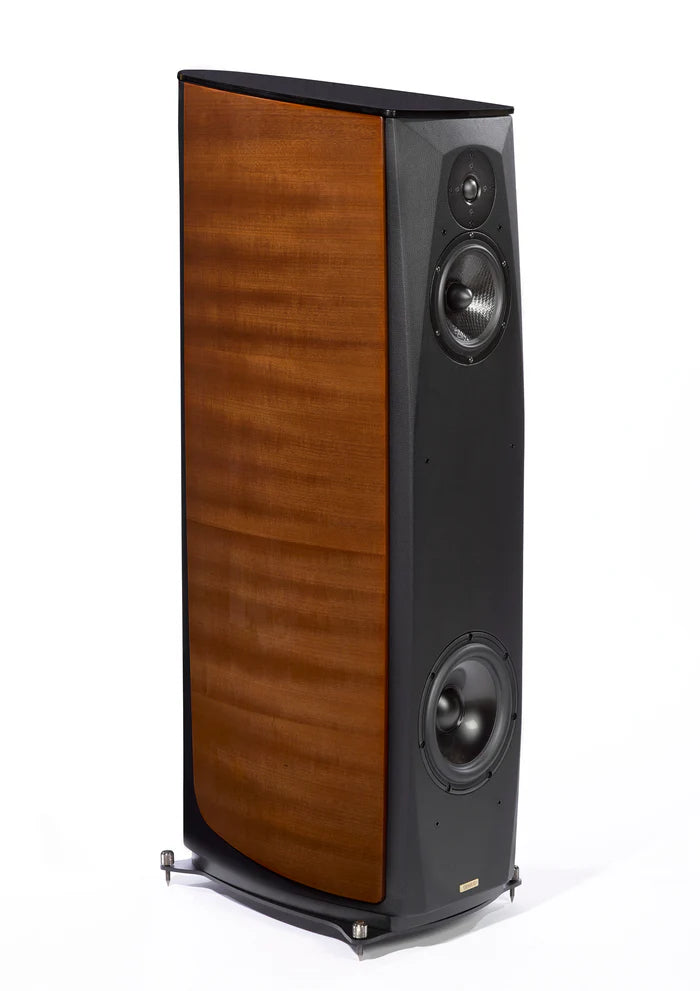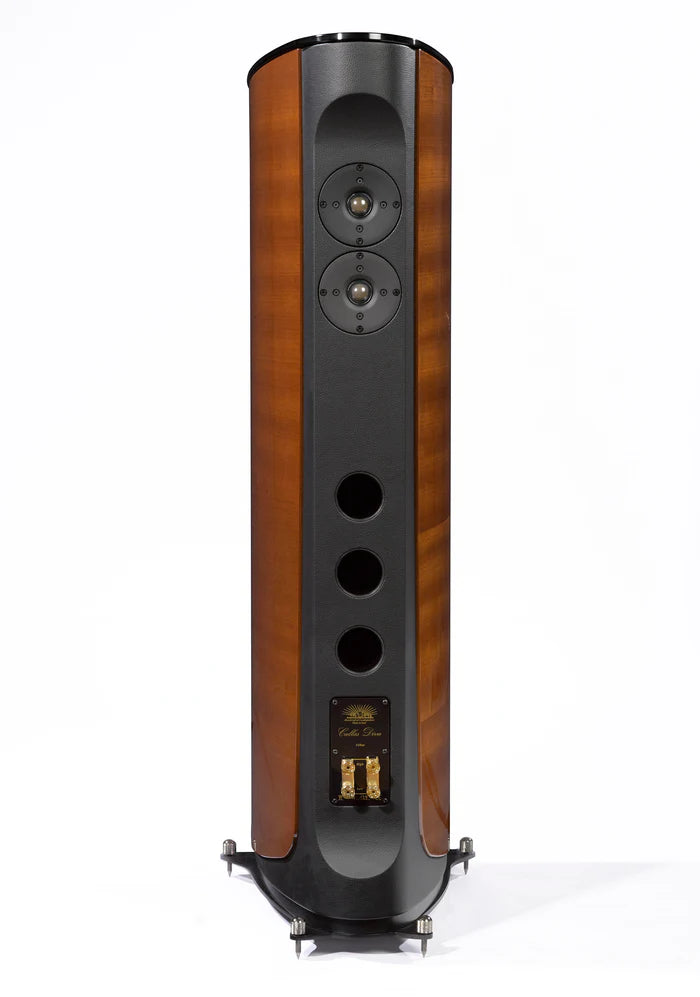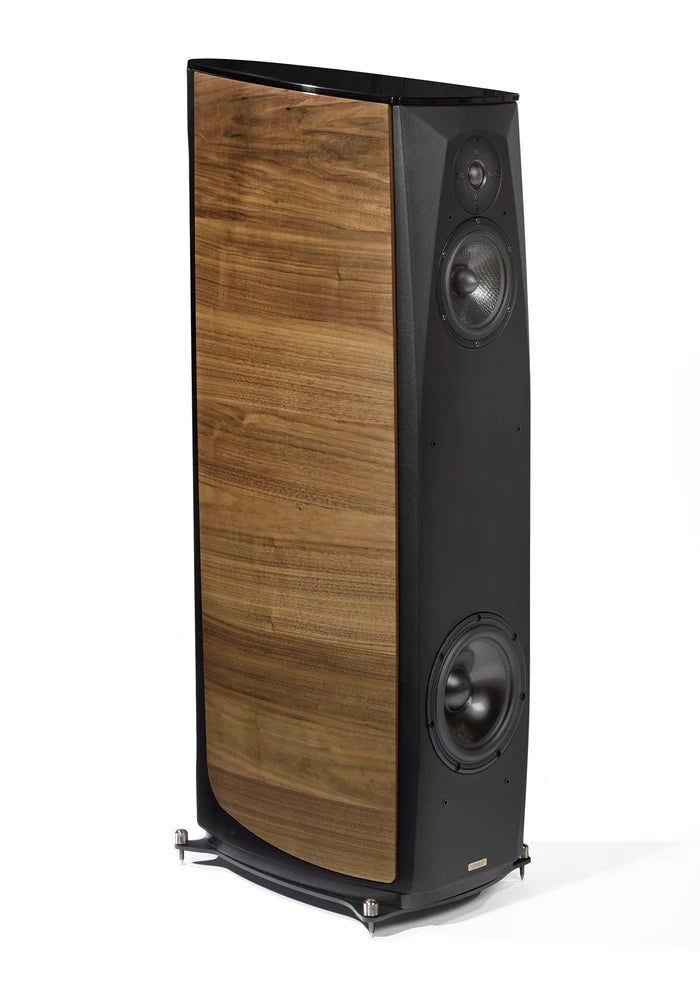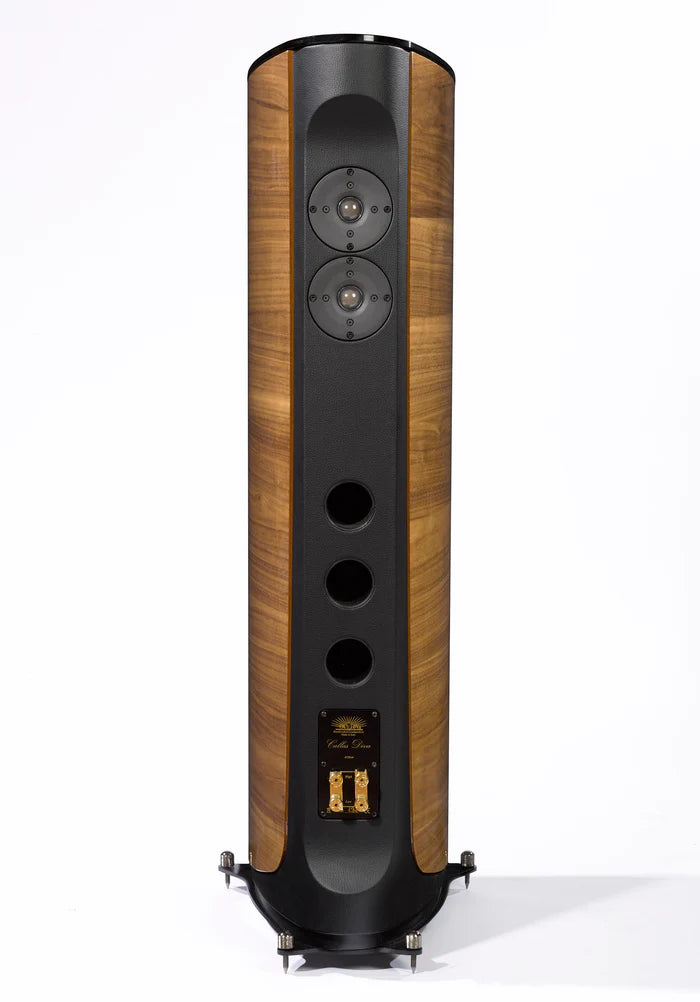Top Shelf Audio
Opera Loudspeakers Callas Diva Each
Opera Loudspeakers Callas Diva Each
Priced each, order two for a pair.
The new Callas Diva model is a three-way floorstanding speaker that replaces the previous model with the same name. It has been completely redesigned. The performance of the new Callas Diva is at the level of the Grand Callas model but with a significant reduction in volume to be use in smaller room.
The low range, reflex loaded design, uses one 8 inch "long-throw" woofer, while the mid-high range is reproduced by a 7" annealed polypropylene midrange and by the 1" Scanspeak 9700 tweeter. The diffuser is complemented by the back radiation system that uses two Tweeters configured as a "natural dipole".
It is obvious the effort to keep all the best features of the Grand Callas 2014 model to offer a complete, high-quality sound , a flexible system that is easily adaptable to the environment, all within an aesthetically pleasing cabinet, and also with a particularly good value for money .
The back radiation system uses two tweeters connected as a natural dipole. The performance of dipole is virtually indistinguishable from the triplet used on previous Grand Callas.
The back radiation feeds the reflected field without interfering with the direct sound , while preserving the accuracy of the transient response. The back radiation balance the power response and increases the "Brilliance" which is a quality related to the perception of sound details. Improving the perception of detail means improving the perception of “space".
The front panel of the cabinet of the new Callas Diva was shaped as to make possible a “close listening” position (with the listener even around a meter and a half from the loudspeakers) and makes this speaker very flexible and adaptable to various situations (for example, areas where the reverberation time is not particularly low).
The other feature that contributes to the flexibility is the ability to modify the response of the low frequencies ( closing the reflex port ).
The Callas Diva 2016 produces a sound stage that expands in three dimensions with an excellent impulse response and power , dynamics and extension at low frequencies worthy of the best in its class .
Driver
The woofer is made by Scan-speak on Opera specifications . It is an 8" woofer with aluminum cone and rubber rim characterized by the magnetic group symmetrize (SD1) and with flux stabilization rings.
The force factor exceeds 10 . This component, although used with a cutoff at 200 Hz is able to work perfectly up to 1500 Hz . This guarantees a perfect overlap between the woofer and midrange two octaves before and beyond the cutoff frequency . For the same reason the midrange of the Callas Diva possesses a linear displacement of 12 mm peak -to-peak (which are also notable for a woofer).
This displacement, apparently disproportionate, is exactly what you need to get pressure 115 dB at 200 Hz The margin of safety is therefore more than adequate to ensure a very low level of intermodulation distortion. The diaphragm of the mid-range is made with annealed polypropylene. The polypropylene has a excellent internal damping but a low stiffness. Subjecting it to a heat stress, it acquires rigidity without losing too much internal damping . The annealing, however, is a delicate process . Even the midrange has the magnetic circuit symmetrize with copper rings both above and below the T-shaped gap (a Seas technology named Excel).
The Scan-speak 9700 tweeter needs no introduction: it is one of the best tweeters ever made and , in some respects, is still unsurpassed . Currently, this tweeter is used on models Malibran , Caruso, Tebaldi , Callas Grand 2014, Callas 2014 and also on the Opera Quinta SE 2014. Besides the sound quality, this tweeter is also highly reliable.
The rear radiation system
Any system of reproduction of high frequencies, at a certain frequency, becomes directional. This means that the acoustic power emitted into the room decreases as the frequency increases.
The phenomenon becomes important starting from about 2000 Hz. To compensate for this effect, you can choose two ways: to use an omnidirectional source or to use an auxiliary source that radiates toward the rear wall. The sound emitted from the auxiliary source inevitably interferes with the main radiation degrading the impulse response of the system and negatively affecting clarity.
The solution is an auxiliary source that emits in all directions except along the axis of preferred listening . One such type of source (strongly anisotropic ) is already present " in nature " and is the dipole .
As can be seen in the following figure by connecting two tweeters in series and out of phase you get the kind of radiation required . In the past ( models Tebaldi , Malibran and Caruso ) Opera has implemented a dual dipole (the CLD with 4 tweeters ) then the triplet ( three tweeters ) was introduced in the Callas models . Today, thanks to the experience and the careful study of the geometry of the cabinet, we have reduced the auxiliary source to a "natural dipole" with only two tweeters.
The auxiliary source is equipped with its own cross-over filter which allows to adjust the cutting and the attenuation as required . The effect of the rear dipole is evident : First it is possible to align the front tweeter level without artificial boost and it makes the reproduction of the high range always full but never aggressive . At the end the sound is much more natural.The auxiliary source overworks the normal characteristics of phono absorption of domestic room which are rarely very sound-absorbing in the high range.
Cabinet
The Callas Diva is a speaker of a certain size. The internal volume is more than 60 liters of which 54 are dedicated to the woofer. The midrange is loaded in suspension in a separate volume. The cabinet is made from MDF and veneered curved plywood . The thickness ranging from 25 mm (sides) to 50 mm of the front panel . The front panel on the inner side , in correspondence of the holes of the loudspeaker, is milled so that turbulence does not arise in the vicinity of the speaker membranes . The inside of the cabinet is braced to connect the four vertical walls. One of the problems of the speakers are the resonances of the cabinet and the other is internal reflections . Regarding the rigidity this is guaranteed by the thickness and the weight of the walls. In order to reduce internal reflections in the midrange midrange volume was completely filled with sheets of open cell polyurethane foam. This porous material, with its particular pyramidal profile, provides an absorption coefficient of 60% at 250 Hz and reaches almost 100% at 500 Hz. Strategically placing the right amount of this absorbent material inside the cabinet befall both reflections (which would produce masking) and the normal modes of the cavity which would produce annoying noise. The relationship between the moving masses and the mass of the cabinet is of the order of 1 to 1000 ( 1022 to be precise ). This means that only a negligible part of the energy due to the motion of the speakers is transferred to the cabinet by promoting the "horizontal definition" or, as is often said, the articulate bass .
The cross-over filter
Normally a three-way cross-over is made up of three sections connected in parallel (woofer low-pass , midrange band-pass and high pass for the tweeter).
We believe there is another way that we have began to use ten years ago with the model Tebaldi. First we prepare the filter between woofer and mid (Opera three-way speakers always have a cut around 200 Hz or so) then we treat to the whole woofer + midrange as a single transducer that possesses the volumetric displacement of the woofer but the radiation pattern to the midrange. To this "mid-woofer system" we apply the low pass needed to meet the tweeter.
The crossover is therefore constituted by two sections: the first section works for the woofer and the midrange. This section is treated as a single compound loudspeaker. The second section works with the compound loudspeaker and the tweeter. It is easy to demonstrate that this kind of cross-over allows you to adjust the cross-over between the midrange and tweeter without altering the phase relationships between the woofer and the midrange. We recall, in this respect that, the electrical phase is changed a decade before and a decade after the cut-off frequency . Even with a first cut at 200 Hz, the phase is changed up to 2 kHz (where is the cutoff between medium and tweeter ).
To build the cross-over we use high quality components such as Mundorf capacitors, MOX resistors and OFC, auto-cementing, inductors. In models such as the Callas Diva, the PCB that contains the cross-over of the tweeter is separated from the PCB that contains mid-bass cross-over to eliminate the self induction phenomenon between the windings that interfere on distortion and clarity.
Room Positioning
The sound quality produced by a pair of loudspeakers depends on a series of details: for example, orienting the speakers towards the listening point you can adjust the depth of the sound stage. You can choose, subjectively, to make the speakers "cross over" in front of the listener, the head of the listener, or behind the listener's head .
Specification
System: Reflex, floor-standing with rear firing radiation system (dipole).
Front Driver: 1 x 8” long-throw woofers, 1 x 7” midrange with polypropylene re- cooked cone and phase plug.
1 x 1” Scan-speak 9700 tweeter without ferrofluid and double decompression chamber"
Rear Driver: 2 x 1” tweeters in “natural dipole” assembly
Number of ways: 3 ways + rear dipole
Fq Response: 30 -25000 Hz
Cross-over: 12 dB/ott. For woofers
12 dB/ott for midrange
12 dB/ott for the front tweeter
12 dB/ott for the rear tweeters
frequencies 200 e 2000 Hz ( aprox )
Max Power: 240 Watt (without clipping)
Sensitivity: 90 dB/2.83 Volt/1 meter
Impedance: 4 ohm (Z min >3.2 ohm)
Room Position: At least 10 cm from the rear wall
Size and Weight: 116 x 37 x 53,5 cm (HxLxP) 65 Kg each including metal base
Finishes: Lacquered Mahogany / Lacquered Walnut
Share
